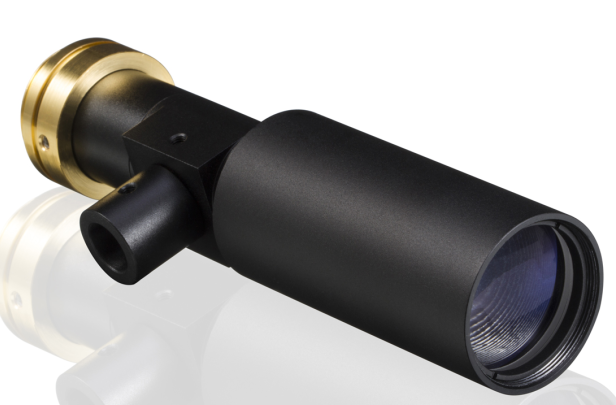Shenzhen Dehong Vision Technology Co., Ltd.
Phone: 137 2892 0823
Fax: 0755-2372-6873
Email: 908450505@qq.com
Website: www.dhkj123.com
en.dhkj123.com
Address: Goldman Sachs Building, No. 18 Shajing
Center Road, Baoan District, Shenzhen
Specify several factors to pay attention to when choosing an industrial lens
Optical lens is an indispensable component in the machine vision system, which directly affects the quality of the imaging quality and affects the implementation and effect of the algorithm. In addition, choosing the right industrial lens to reduce the cost of the machine vision system is the only way for the industry to flourish. It is also very important for machine vision to play its due role.

Industrial cameras, analysis software, and machine vision light sources are important in machine vision systems, but the most critical component is the imaging lens. If the system wants to fully utilize its functions, the industrial lens must be able to meet the requirements. When selecting a lens for a control system, machine vision integrators should consider four main factors: the ability to detect object types and characteristics, depth of field or focal length, loading and detection distance, and operating environment. Analyzing these four factors, you can determine the right lens choice for your specific application. Earlier we also introduced the influence of environmental factors on lens selection.
Object Characteristics Before selecting an industrial lens for a machine vision system, the system integrator must determine the object and analysis environment. This area of view is called unobstructed field of view (FOV), and it can be measured using both vertical and horizontal angles. Generally, the ratio of the vertical and horizontal dimensions is 4: 3, and this ratio depends on the size of the working area of the camera sensor. The size of the sensor is important to determine the primary magnification (PMAG) required for an unobstructed field of view. PMAG is obtained by comparing the size of the sensor with the FOV, which is the effectiveness of the lens. This needs to be considered when determining whether the lens is suitable.
Lens magnification is very important for matching lenses of different size chip cameras. However, do not confuse lens magnification with microscope magnification, the latter is determined by the length of the light pipe and the actual objective focal length. The main consideration for industrial lens magnification is the size of the camera sensor.
System magnification (SMAG) is the product of the ratio of monitor size to sensor size and PMAG. It is the overall magnification from the object to the monitor image, which is the "working" result of the entire system. System magnification is useful when considering the screen size of an object.
The characteristics of the object are also important. The ability of industrial lenses to analyze object features depends on whether the feature contrast is strong. As a method for determining the system resolution or the minimum and more analytical characteristics of an object, a resolution method such as the Lenzi rule method can be used. These graticule methods use line coupling (a black line and a white line of equal width) to determine features. Other resolution methods can also use circles and dot grids.
The ability of a lens to recognize line coupling or dot pitch of a specific width under specified light conditions determines its resolution. The resolution is usually displayed graphically by the module conversion function (MTF).
Distance constraint
The space required for automated machine vision systems and assembly lines varies widely, ranging from a few meters to an entire plant. The so-called working distance refers to the distance between the object and the front end of the lens of an industrial camera when the image is within the focal length range. It limits the space required by the vision system and the devices that work with it. There are some applications, such as observation through the port of the vacuum furnace, the working distance is very flexible, both close focus lenses and long working distance video microscope heads can be used. Other applications, such as micro-inspection of strong electricity, have working distances of only a few inches.
Within the limits, the working distance can be changed by refocusing the lens. The focusing distance of the infinite conjugate lens can be from the minimum working distance to infinity, and the finite conjugate lens has a specific working distance range.
Storage and loading restrictions, including protective enclosures for harsh environments, must be flexible enough to be adjusted to the working distance. For example, in many installations, the product area and product line of interest may change during the inspection process, which requires that the vision system and vision components can be adjusted according to several sensing conditions. Many camera lenses need to be loaded smoothly, but when the object space (the distance between the object and the lens) is limited, changing the image space (the distance between the lens and the image) can change the working distance.
Depth of field
The performance of the optical system depends on the allowable degree of image blurring, and the blurring may originate from the position drift of the object plane or image plane. Depth of field refers to the acceptable range of blur caused by the movement of the detector. It depends on the working F number (F / #) and can be used to measure the lens's ability to focus light. F / # increases as the lens aperture decreases. Decreasing the lens aperture means increasing F / #, that is, increasing the depth of field of the system, but reducing the amount of light entering the sensor, so the illumination level must be increased to compensate.
Depth of field effect (DOF) refers to the blur caused by the movement of an object. DOF is the maximum object depth that is completely within the focal length range, and it is also the allowable amount of movement of the object (moving back and forth from the optimal focal length) while maintaining the ideal focus. When the object is placed closer or farther than the working distance, it is out of focus, so the resolution and contrast will be adversely affected. For this reason, DOF works with the specified resolution and contrast. When the depth of field is constant, the DOF can be increased by reducing the lens aperture (that is, increasing the F / # value), and it also requires light enhancement.
The DOF range of a lens depends on the effective focal length and acceptable blur diameter. Some lenses are designed to be hyper-focusing or hyper-focusing, which means that the far point in focus can be extended to infinity. This technique is usually applied to fixed-focus lenses. The depth of field effect is very deep, but it can be passed through the iris. Note that you should not mix telecentric lenses with large depth of field lenses. A telecentric lens allows the machine vision system to control the magnification and eliminate potential errors, so objects of the same size have the same height in the photo, no matter how far away it is from an industrial camera. An example of a practical application of this lens is analyzing a computer circuit board. Telecentric lenses usually have a working distance range that forms a limited depth of field at each working distance point. When integrators choose a telecentric lens for a project, they need to consider both the working distance range and the depth of field effect.
Industrial lenses have a profound impact on machine vision systems. According to the actual application, choosing lenses that meet the system requirements can ensure the stability of the system and ultimately give play to its advantages.

attention
Shenzhen Dehong Vision Technology Co., Ltd.
Phone: 137 2892 0823
Fax: 0755-2372-6873
Email: 908450505@qq.com
Website: en.dhkj123.com
Address: 19th Floor, Goldman Sachs Building,
No. 18 Shajing Center Road, Baoan District, Shenzhen
